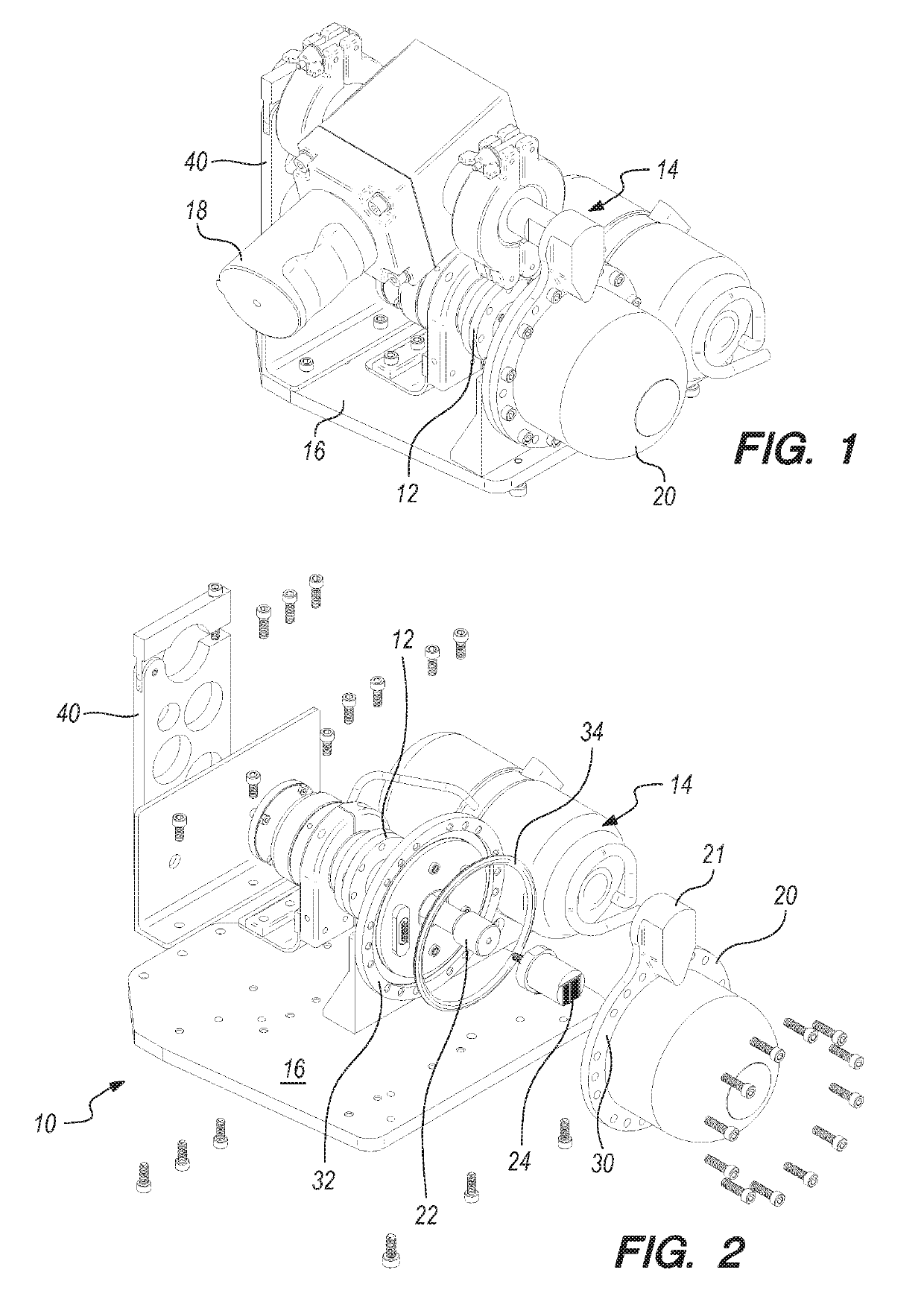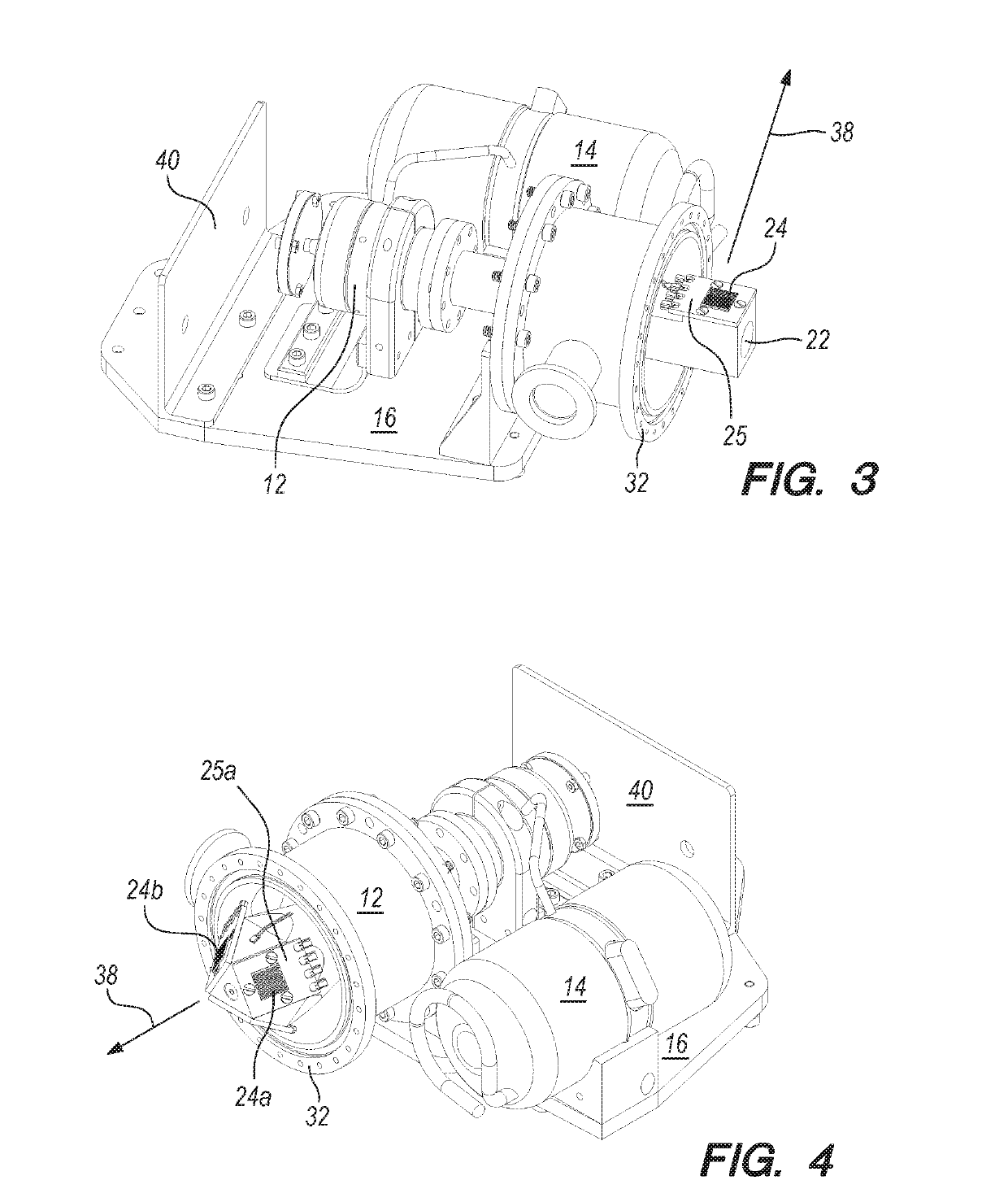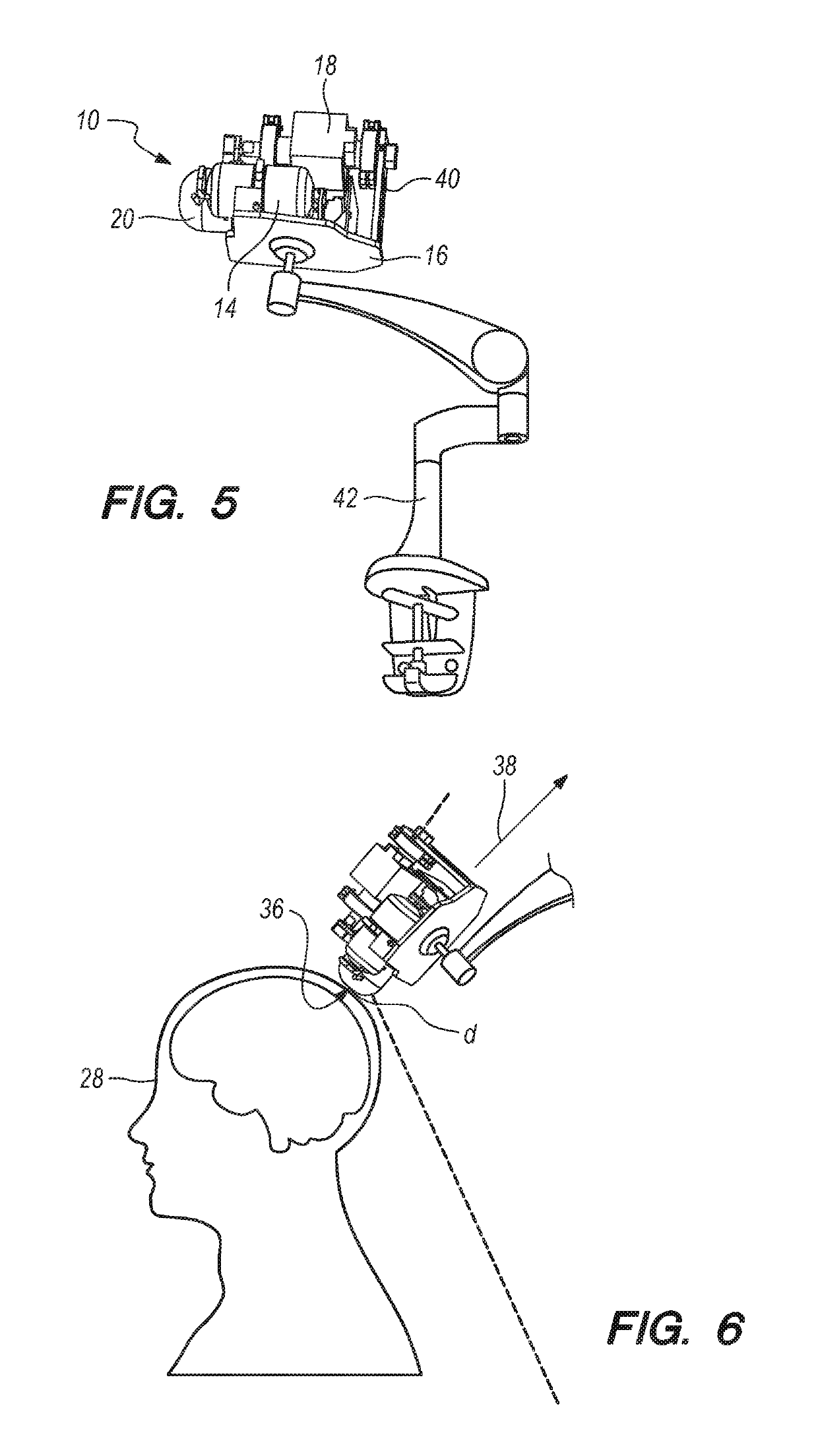Detection of biomagnetic signals using quantum detector arrays
a quantum detector and biomagnetic signal technology, applied in the field of magnetic field sensors, can solve the problems of not increasing in popularity of meg and mri, non-optimal signal detection, and no known way to provide seamless solution, etc., to achieve the effect of convenient movement and small device footprin
- Summary
- Abstract
- Description
- Claims
- Application Information
AI Technical Summary
Benefits of technology
Problems solved by technology
Method used
Image
Examples
Embodiment Construction
[0030]In brief overview, the method and system described herein consists of a system that can adapt Superconducting Quantum Interference Device (SQUID) arrays (SQAs), which have been previously uniquely designed to operate as an active small electrically broadband superconducting antenna based on detection of quanta of electromagnetic radiation, to detect biomagnetic waves. An embodiment of the detector can include SQAs that can include a front end with a mechanism to control the incoming magnetic field, a thermal management interface, a chip carrier for the sensor with proper functionality to control radiation and provide a clean output of the signal, including channelizer abilities (frequency discrimination) and application specific interfaces. The front end, thermal management interface, and chip carrier can work together as a system that can allow the user to isolate and identify free traveling electromagnetic waves in the far and / or near field region of the sensor.
[0031]An embo...
PUM
 Login to View More
Login to View More Abstract
Description
Claims
Application Information
 Login to View More
Login to View More - R&D
- Intellectual Property
- Life Sciences
- Materials
- Tech Scout
- Unparalleled Data Quality
- Higher Quality Content
- 60% Fewer Hallucinations
Browse by: Latest US Patents, China's latest patents, Technical Efficacy Thesaurus, Application Domain, Technology Topic, Popular Technical Reports.
© 2025 PatSnap. All rights reserved.Legal|Privacy policy|Modern Slavery Act Transparency Statement|Sitemap|About US| Contact US: help@patsnap.com



